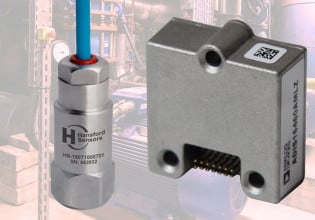CUI Devices Introduces IP-rated Tactile Switches Built for Industrial Environments
What are tactile switches and what are some key features of these new series of switches from CUI Devices?
CUI Devices
CUI Devices, formally of CUI Inc., manufactures electronic components specializing in audio components, interconnect, thermal management, motion, sensors, and switches.
CUI started in Portland, Oregon, and now has offices and manufacturing facilities around the world. Its mission is to collaborate and provide OEMs with electronic components. Recently, CUI Devices added a family of tactile switches to their current switch product line. CUI Devices already offers a line of DIP switches, push-button switches, and slide switches.
Tactile Switches
A tactile switch has the same function as any other switch on the market. With a tactile switch, a small mechanical device transmits vibrations through the portion of the switch where the operator touches it. When the switch is pressed, the internal contacts close, completing the circuit and allowing current to flow through the switch.

The new tactile switches. Image used courtesy of CUI Devices
These vibrations are typically created by dragging a flat spring over a ramp on the actuator. When the spring slaps the side of the actuator, the operator can feel the vibrations in their fingertips. With some tactile switches, the tactile device is located halfway through the stroke of the switch but is only triggered once the contact is closed.
This style of switch aims to inform the user that the switch has closed the contacts and the switch can be released to the home position. Using a tactile switch confirms that the switch operation is complete.
CUI Device’s Tactile Switch
CUIs tactile family of switches is designed for PCB mounting, which could be used in various electronic office equipment or industrial OEM components.
The switches are SPST (single pole single throw) suitable for controlling one circuit at a time. The tactile switch family comes in two different mounting styles, surface mount or through-hole. Termination styles that are offered are; gull-wing, short crimped or long crimped.

A diagram showing how tactile switches work. Image used courtesy of OMRON
The voltage rating is 12VDC with a 50mA current capacity and operating temperatures of -30 to 80 °C. CUI offers these switches with an IP67 rating to handle harsh operating environments. The downside to tactile switches is the mechanical component. Because of the spring or other component that creates the vibrations, these switches have a finite lifecycle of about 100,000 clicks
Industrial Uses
Automation components these days have more function and require more programming on the specific device to accommodate these features.
With all this functionality built into the device, OEMs have to add input components to their devices to facilitate programming or feature enable and disable. Once the OEM decides to add an input button, they need to think about the feel of that button and how a person will interact with it.
By using a tactile button the user will know when the button has been pressed by the physical confirmation of the tactile feature. CUI Devices is hopeful that these new switches can help engineers ensure quality throughout their processes.






